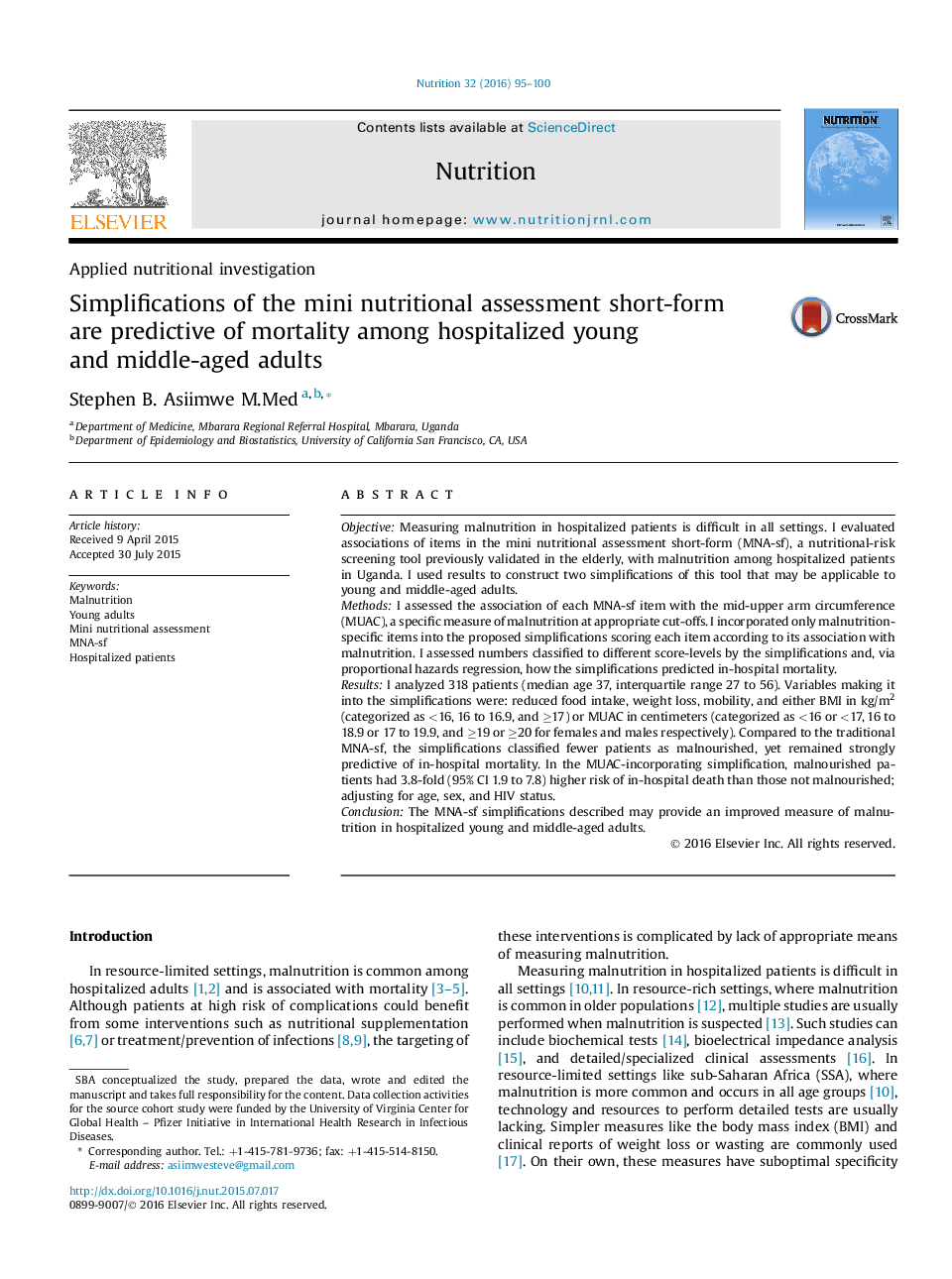| Article ID | Journal | Published Year | Pages | File Type |
|---|---|---|---|---|
| 6089181 | Nutrition | 2016 | 6 Pages |
•In resource-limited settings, complicated nutritional tests are rarely available.•BMIs are often either difficult to obtain or unreliable for hospitalized patients.•The mini nutritional assessment short-form (MNA-sf) predicts in-hospital mortality.•This study assessed the associations of each MNA-sf item with malnutrition using the mid-upper arm circumference as reference.•Results were used to develop 2 simplified MNA-sf versions applicable to young adults.
ObjectiveMeasuring malnutrition in hospitalized patients is difficult in all settings. I evaluated associations of items in the mini nutritional assessment short-form (MNA-sf), a nutritional-risk screening tool previously validated in the elderly, with malnutrition among hospitalized patients in Uganda. I used results to construct two simplifications of this tool that may be applicable to young and middle-aged adults.MethodsI assessed the association of each MNA-sf item with the mid-upper arm circumference (MUAC), a specific measure of malnutrition at appropriate cut-offs. I incorporated only malnutrition-specific items into the proposed simplifications scoring each item according to its association with malnutrition. I assessed numbers classified to different score-levels by the simplifications and, via proportional hazards regression, how the simplifications predicted in-hospital mortality.ResultsI analyzed 318 patients (median age 37, interquartile range 27 to 56). Variables making it into the simplifications were: reduced food intake, weight loss, mobility, and either BMI in kg/m2 (categorized as <16, 16 to 16.9, and ≥17) or MUAC in centimeters (categorized as <16 or <17, 16 to 18.9 or 17 to 19.9, and ≥19 or ≥20 for females and males respectively). Compared to the traditional MNA-sf, the simplifications classified fewer patients as malnourished, yet remained strongly predictive of in-hospital mortality. In the MUAC-incorporating simplification, malnourished patients had 3.8-fold (95% CI 1.9 to 7.8) higher risk of in-hospital death than those not malnourished; adjusting for age, sex, and HIV status.ConclusionThe MNA-sf simplifications described may provide an improved measure of malnutrition in hospitalized young and middle-aged adults.
